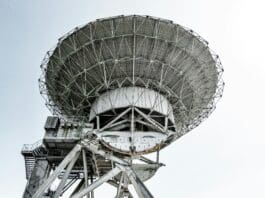This post is also available in:
 עברית (Hebrew)
עברית (Hebrew)
Experts claim there are over 160 million pieces of space debris currently orbiting Earth, which could be extremely dangerous and cause a cascading chain of collisions. However, according to NASA’s new report, things might not be as dire as we thought, especially with some new and promising strategies.
The report emphasizes that avoiding collisions in space is critical – if a piece of space debris breaks a satellite in orbit, it would create many more pieces of space shrapnel that would break other satellites apart, leading to a catastrophic effect known as the Kessler Syndrome.
The report then compares over ten different strategies for reducing the risk of collisions between satellites and space debris, including space debris removal missions, better satellite shielding, and improved space debris tracking. “This study allows us to start to answer the question: What are the most cost-effective actions we can take to address the growing problem of orbital debris?” says the lead author of the report, NASA analyst Jericho Locke.
According to Interesting Engineering, one of the most effective methods is the act of reducing the post-mission disposal time (the amount of time a satellite is allowed to stay in orbit after it achieves its mission goals), as reducing this timeframe would significantly reduce the amount of clutter in orbit at a relatively low cost.
This new paper builds on an earlier report from 2023 that set out to estimate the cost of space debris on satellite operators, including the cost of maneuvering to avoid debris. Locke explains that “by measuring everything in dollars, we can directly compare shielding spacecraft to tracking smaller debris or removing 50 large pieces of debris to removing 50,000 smaller ones.”
Just last week, a collaborative private sector effort also launched the Space Trash Signs initiative, which highlighted the space debris problem by creating debris “constellations” and outlined the cost of removal of each of the pieces of space junk that make up these makeshift patterns.




